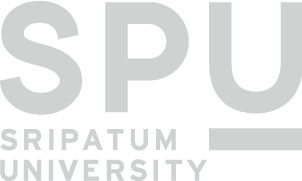Department of Tourism and MICE Management, College of Tourism and Hospitality, Sripatum University, led by Dr. Panat Atsawchai, took students to the actual area, learn from real people, and gain real experiences, collecting routes in the North (Sukhothai, Phrae, Phaya, Lampang, Chiang Rai) between 1-5 October 2020.
Let’s start with Wat Phra Sri Rattana Mahathat Cheliang.
Located in the southeast, outside the walls of Si Satchanalai, facing east, it is believed that Wat Phra Sri Rattana Mahathat was the center of the city of Cheliang since the time of King Sri Naw Nam Thom (around 1780 B.E.) with evidence of the stucco arch at the entrance to the temple, which has the style of Bayon art, and evidence from archaeological excavations that confirm that Wat Phra Sri Rattana Mahathat has been around since the 18th Buddhist century.
Check-in point 2: Wat Chang Lom
It is an important ancient site located in Si Satchanalai Historical Park, Si Satchanalai District, Sukhothai Province. It is inside the Si Satchanalai city wall on the southern foothills of Khao Phanom Phloeng. The important ancient site is the Sri Lankan-style principal stupa located inside the square wall on a square circumambulation base. At the base of the stupa, there are 39 stucco elephants standing with their backs to the stupa wall around it. Elephants at the four corners of the stupa are decorated as decorated elephants with stucco decorations on their necks, legs, and ankles. In front of the principal stupa, there are stairs leading up to the circumambulation area. Above the circumambulation base, there is a niche of a seated Buddha image in the Mara-Vijaya attitude. The niche wall has a sculpture of a Bodhi tree behind the Buddha image, but the Buddha image has been destroyed, leaving only one. To the north, in the bell-shaped area, there is a throne decorated with 17 stucco disciples in bas-relief.
Check-in point number 3: Wat Chedi Chet Thaeo
It is one of the important ancient sites of Si Satchanalai Historical Park, located in Si Satchanalai District, Sukhothai Province. The temple is located in front of Wat Chang Lom, facing southeast. This temple is unique compared to other temples in Si Satchanalai because it has many different types of chedis, such as the main chedi in the shape of a lotus bud behind the chapel, which is a true Sukhothai art style, 26 secondary chedis, and seven rows of chedis that have been influenced by art from many places, such as Sri Lanka and Bagan. Behind the main chedi are secondary chedis that have a distinctive square base and round tops. Inside the chedi, there is a niche hall, and the niche hall is where a standing stucco Buddha image is enshrined, with paintings depicting past Buddhas.
Check-in point number 4: Wat Nang Phaya
There is a fairly large area. Inside the temple, there is a Sri Lankan-style pagoda with a main chedi niche, built of large laterite and in perfect condition. Around the base of the pagoda, there are lamp posts all the way, stairs leading up to the pagoda, and a seven-roomed vihara, which is a popular plan for Sukhothai and northern architecture. Inside the vihara, along the pillars on every side, there are deities and various patterns made of unglazed Sangkhalok. The highlight of this temple is that there is one wall left with beautiful stucco decoration, but it has now peeled off quite a bit. A zinc roof has been built to cover the wall for conservation. This wall has no windows, but there are air vents in the Sukhothai and early Ayutthaya styles.
Check-in point number 5: Chom Sawan Temple
Located on Yantrakitkoson Road, Nai Wiang Subdistrict, Mueang District, Phrae Province, 1 kilometer from the provincial hall, it is an ancient temple built in the Bagan (Burmese) style. It has beautiful and valuable artifacts and antiques. What makes this temple special is that it has only one wooden chapel, which is both a chapel and a monk’s residence in the same building. The building is made entirely of teakwood, with a roof of various sizes and levels, totaling 9 levels. Currently, the Fine Arts Department has registered Wat Chom Sawan as a national treasure on August 27, 1984.
Check-in point number 6, Khum Chao Luang Muang Phrae
An ancient place that has been with Phrae for a long time. It is a valuable building with a distinctive architecture that is a mix of Thai and European architecture, or what is often heard as “gingerbread shape”, which was popular during the reign of King Rama V. Construction began in 1892 by Chao Luang Piriyathepwong, the last ruler of Phrae. It was built by a famous Chinese craftsman at that time. It is a two-story building with elegance and decorated with intricately carved wood. When entering the building, you will see the grandeur and luxury. There are 72 doors and windows in total. Each door has a different name. It is popular to name it for good luck, such as the Tong Kham Tai Gate.
Check-in point number 7: Khum Wongburi or Baan Wongburi
A striking pink building over 100 years old, located on Kham Lue Road, Mueang District, Phrae Province, Khum Wong Buri was built based on the idea of Mae Chao Bua Tha, the first wife of Chao Luang Piriyathep Wong, the last ruler of Phrae, as a gift for the marriage between Chao Sunanta, the daughter of Chao Burirat, and Luang Phong Phibun. This house is a light pink Thai-European style building, which is Mae Chao Bua Tha’s favorite color. It is a large two-storey golden teak house in a Lanna-European style, decorated with fretwork patterns called “gingerbread”, which was popular during the reign of King Rama V. It is beautifully decorated all over the building, such as the gable, roof ridge, waterfront, vents, window frames, above the doors and windows, and balconies. Inside the building, there are floral and vine patterns, etc. The foundation of the building is made of large, hard logs laid in a row before being covered with bricks and cement. To strengthen the stability of the building, Khum Wongburi consists of interesting rooms: Chao Buatha’s room, the living room, and the bedroom. Each room has various items such as cabinets, beds, tables, chairs, dressing tables, cups, bowls, silverware, iron bowls, ancient weapons, ancient Buddha images from the Chiang Saen and U Thong periods, as well as various old pictures that tell the story of this house.
Check-in point number 8: Wat Phra That Cho Hae, Royal Monastery
It is an ancient sacred temple of Phrae Province and is the temple of the sacred relic of those born in the Year of the Tiger. It is located at No. 1, Village No. 11, Cho Hae Road, Cho Hae Subdistrict, Mueang Phrae District, Phrae Province, on an area of 175 rai. Anyone who comes to visit Phrae Province must come to pay homage to Phra That Cho Hae for good luck. There is even a saying that if you come to visit Phrae Province but do not come to pay homage to Phra That Cho Hae, it is like you have not come to Phrae Province.
Check-in point number 9: Outdoor Film Museum (Retro Film Conservation Center)
Built with the personal funds of Uncle Manit Worachat, this is another place of historical value, a collection of many old films and a huge number of movie posters. Uncle Manit is also a committee member of the Thai film unboxing. For those who are movie buffs, you must be familiar with the old Thai films that were shown in theaters on Thai PBS (Thai TV), most of which came from here… but some of us never knew that there were good things nearby. Uncle Manit used to work for Osotspa Company in the film department, traveling to show medicine-selling films (or outdoor movies) all over Thailand. After resigning, he collected related objects and organized them into a museum as seen here. Not only that, the museum is also a network with the National Discovery Museum (NDM), the National Film Archive, the Thai Voice Actors Association, and the Princess Maha Chakri Sirindhorn Anthropology Centre.
Check-in point number 10: Kwan Phayao
Located in Mueang Phayao District, Phayao Province, it is the largest freshwater lake in the North and the fourth largest in Thailand (after Bueng Boraphet, Nong Han, and Bueng Lahan). The word “Kwan” in the local language means “lake”. It came about when the Fisheries Department built a water gate to provide water for the people in the dry season and to prevent the strong water from flooding the orchards and farms downstream in the rainy season. It is located in the center of Phayao City with a mountain range as a backdrop. It is formed by water flowing from 18 streams. The average water volume is 29.40 million cubic meters per year. There are 45 species of freshwater fish.
Check-in point number 11: Wat Rong Khun
Designed and built by Chalermchai Kositpipat, a famous Thai artist, it was built with a strong determination to create beautiful and unique artworks that harmoniously blend Lanna culture and traditions, including stucco patterns decorated with glass and large mural paintings. The temple’s distinctive feature is the ordination hall decorated with shiny silver glass patterns in layers. The pediment is decorated with Naga serpents with unusual tusks. The mural paintings inside the ordination hall were painted by the teacher himself.
Check-in point number 12: Wat Phra Kaew
Located on Trairat Road in the heart of Chiang Rai, this temple was where the Emerald Buddha or Phra Phuttha Maha Mani Rattana Patimakorn, which is currently enshrined at Wat Sri Rattana Satsadaram (Wat Phra Kaew) in Bangkok, was discovered. According to history, in 1897 during the reign of King Sam Fang Kaen, a lightning struck an abandoned pagoda and a gold-lacquered Buddha image was found inside. Later, the lacquer peeled off, and it was discovered that the Buddha image was green jade, which is the Emerald Buddha. Wat Phra Kaew Chiang Rai currently enshrines the Jade Buddha, which was newly built on the occasion of Her Majesty Queen Srinagarindra’s 90th birthday.
Check-in point number 13: Phra That Doi Tung
It is considered one of the oldest historical sites in the North. According to the historical legend, Phra Maha Kassapa Thera, the head of the monks, invited the relics of the clavicle (left root) of the Lord Buddha to present to King Uchutarat, the ruler of the city of Nagaphan Yonok Chai Buri, King Rama III of the Singhanawati Dynasty, who was the head along with the chief ministers, ministers, and subjects of his kingdom. He brought the relics to be enshrined at Doi Din Daeng (currently Doi Tung) in 1454 B.E.
Cr. SPU page, Tourism Management Program




















































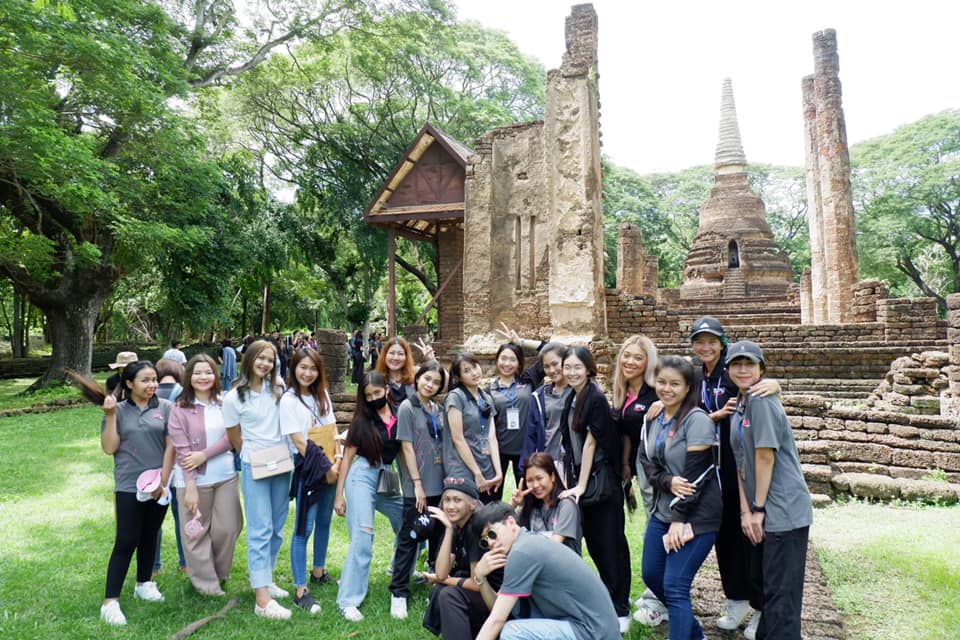
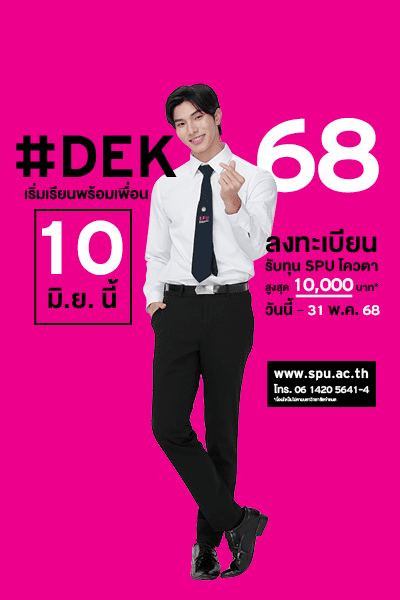

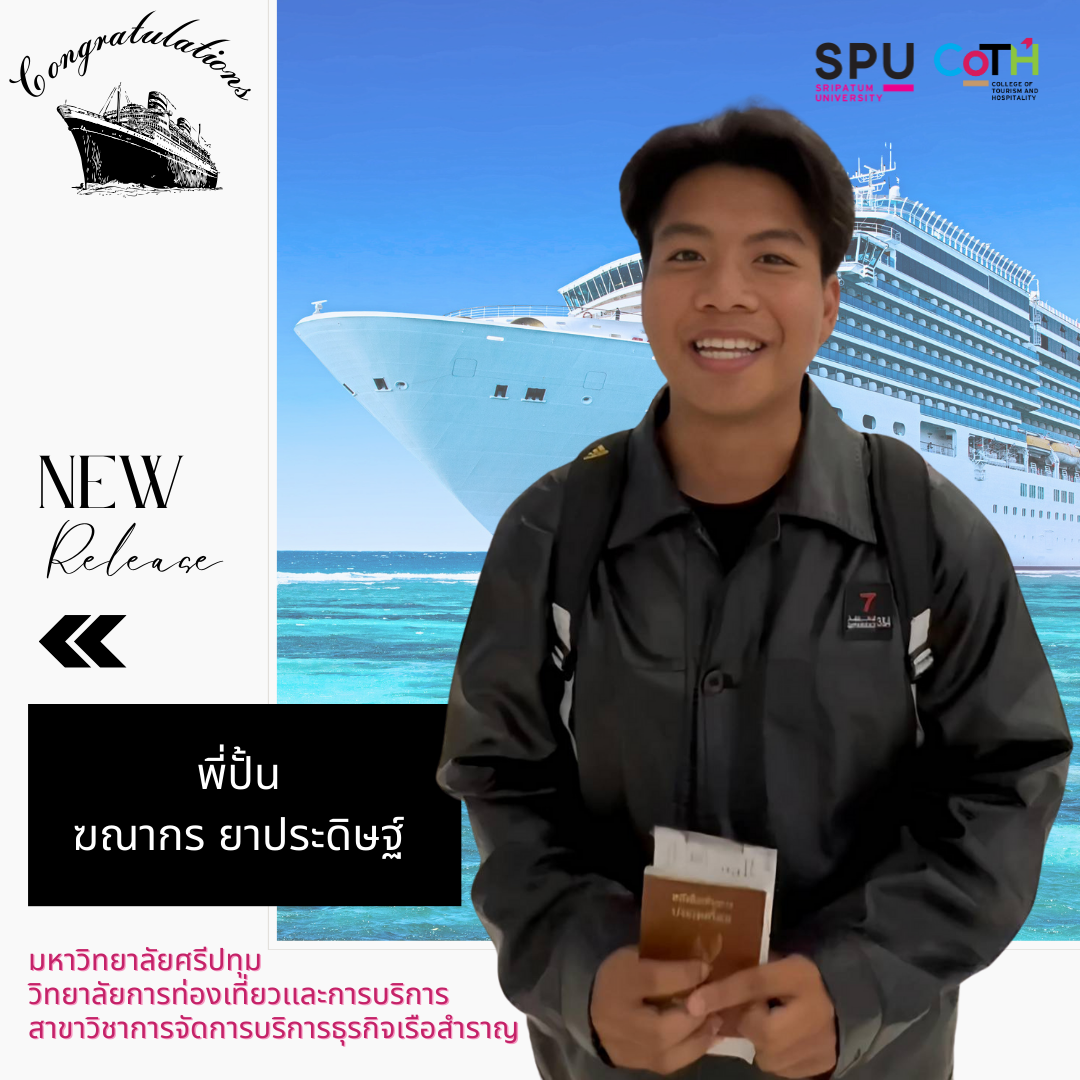

 The first step towards the path of dreams!
The first step towards the path of dreams! 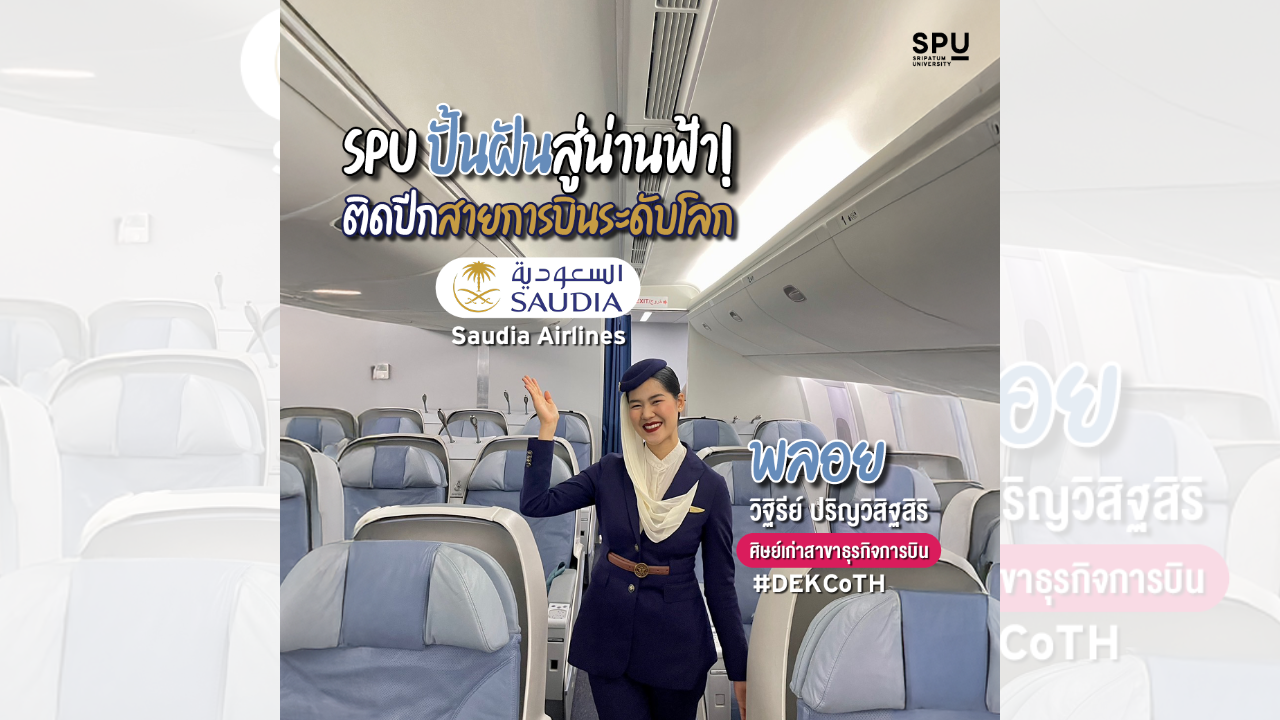
 SPU, make your dreams come true! Conquer your career path with world-class airline Saudia Airlines
SPU, make your dreams come true! Conquer your career path with world-class airline Saudia Airlines 




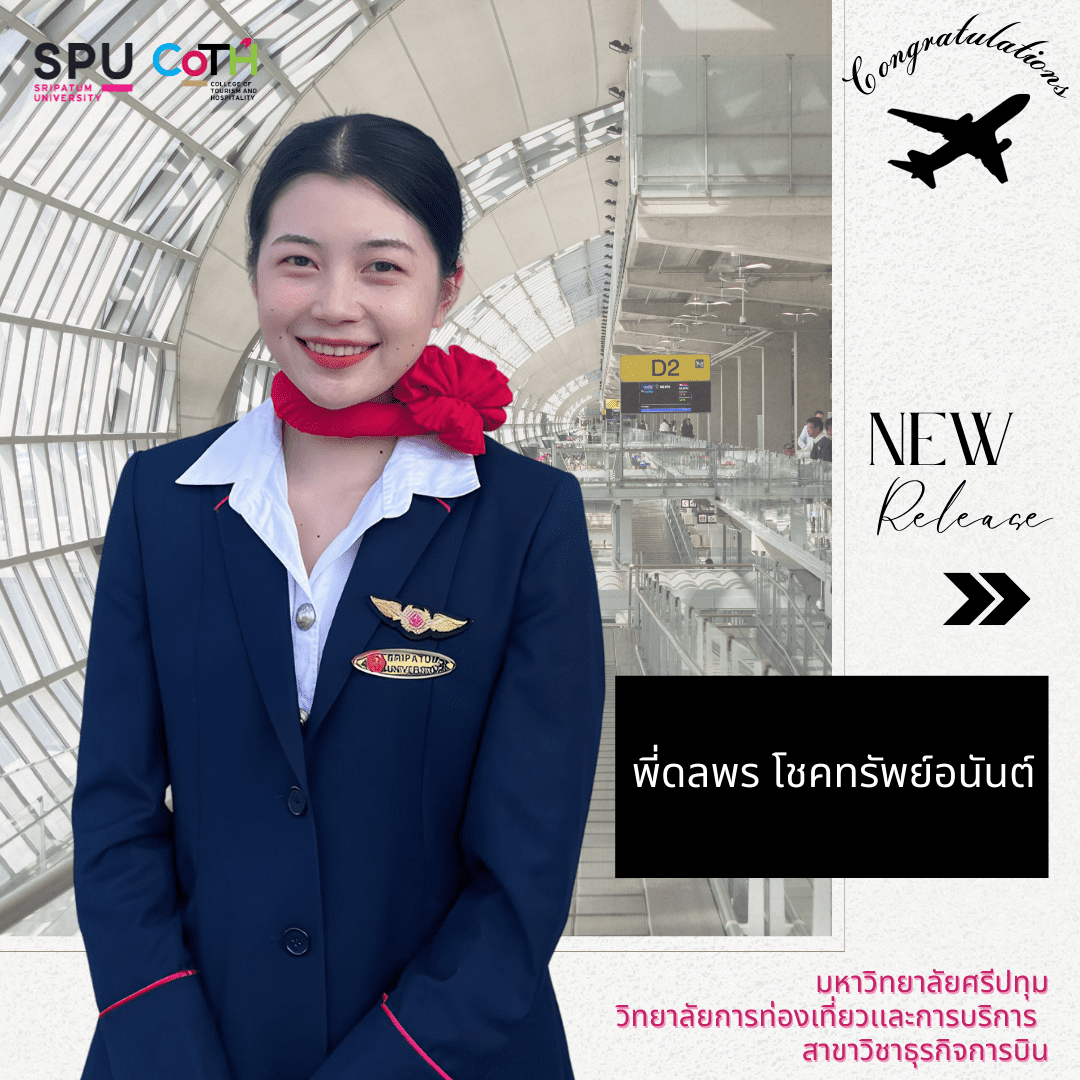
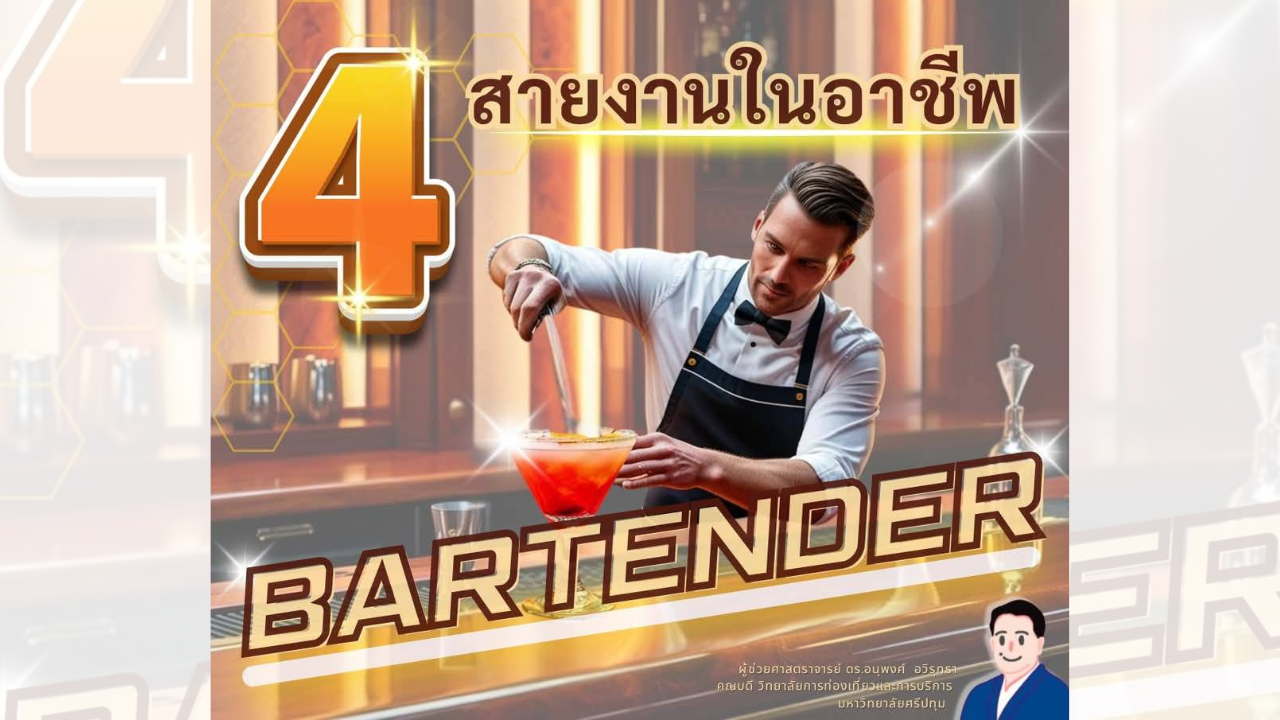
 4 interesting career paths in the Bartender profession
4 interesting career paths in the Bartender profession 
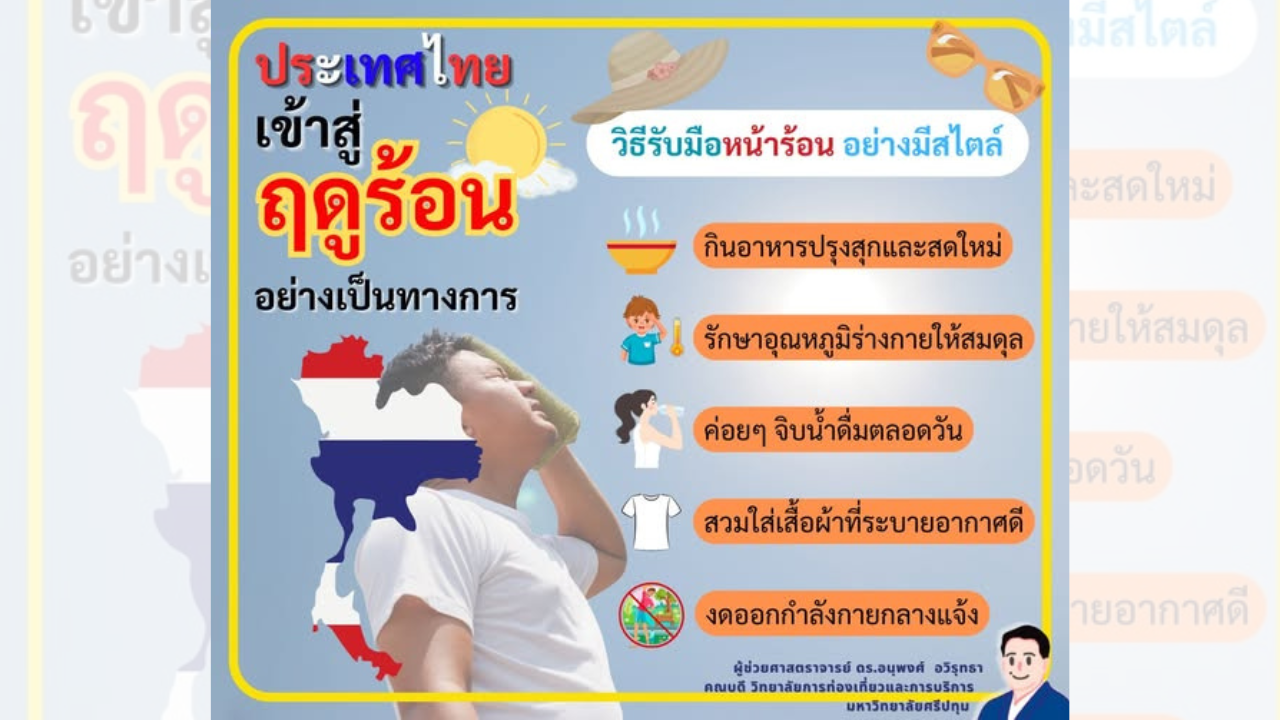

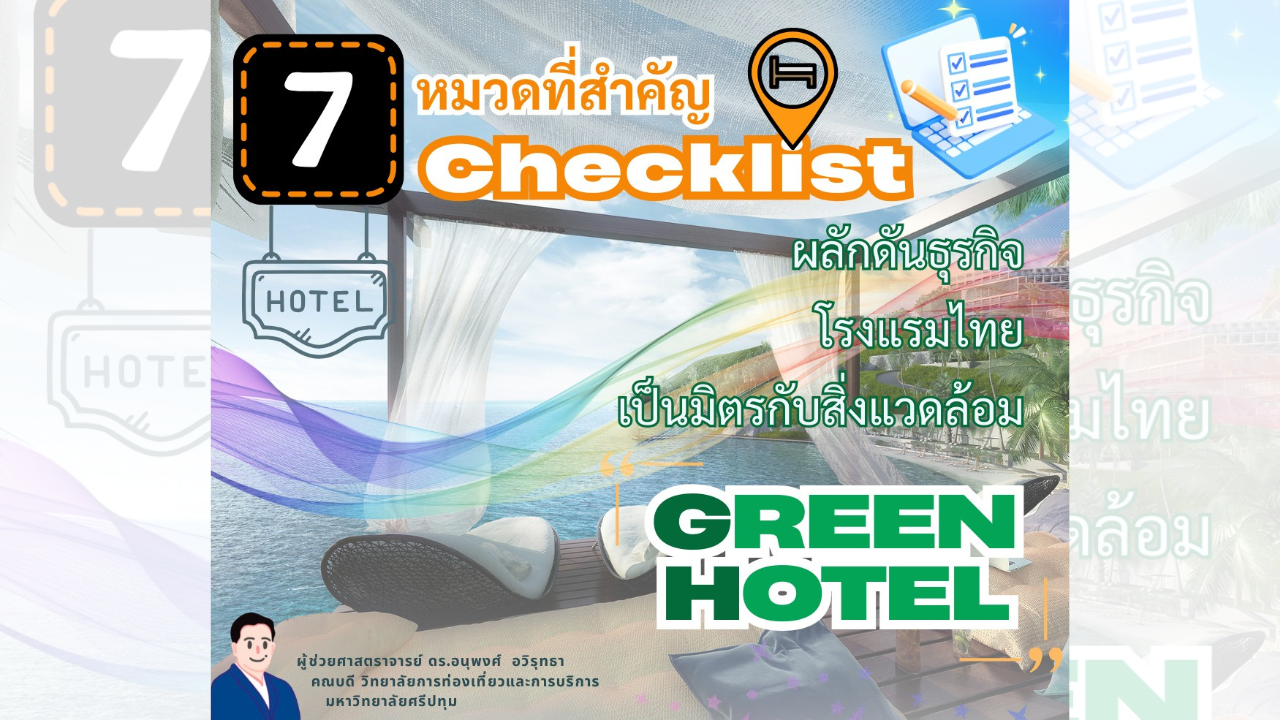
 Checklist 7 topics to promote Thai hotel businesses that are environmentally friendly (Green Hotel)
Checklist 7 topics to promote Thai hotel businesses that are environmentally friendly (Green Hotel) 
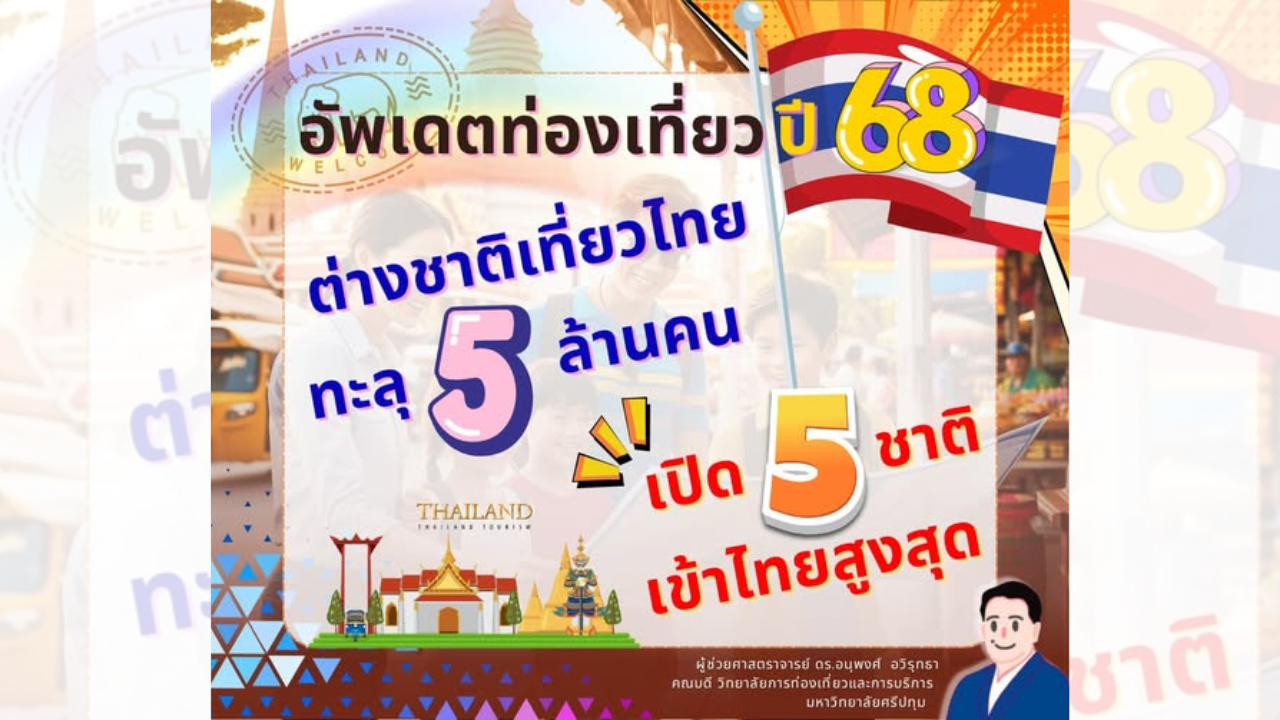
 Tourism Update 2025, foreign tourists visiting Thailand exceed 5 million people, opening 5 countries to enter Thailand the most
Tourism Update 2025, foreign tourists visiting Thailand exceed 5 million people, opening 5 countries to enter Thailand the most 

 Thailand is one of
Thailand is one of The Department of Climate
The Department of Climate